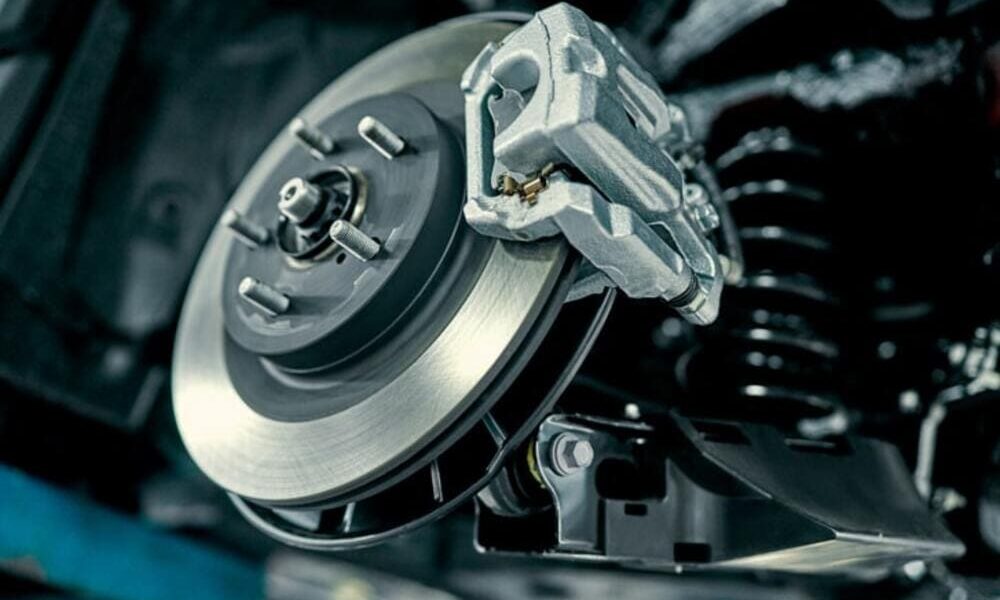
Your car brakes are the most important part of your vehicle. Your family’s safety is determined by whether or not your brakes are working optimally. Brakes that are worn out, or are not in the best of conditions, are one of the leading causes of fatal accidents. Fortunately, there are ways you can identify if your brakes have problems.
Grinding
If you hear a grinding sound, it means your brake pads need to be replaced ASAP, or something gets stuck on the rotors every time you apply the brakes. This could be a caliper or in severe cases, a metal part of the brake pads.
Whatever the issue is, you should have it looked at immediately.
Squealing
If you hear a high-pitched squealing, it usually means that your brake pads are worn out. Accumulated brake dust on the brake pads can also cause a high-pitched squealing. Other causes can be debris or rust on the rotors, or glazing of the secondary brake shoe because of too much heat. You need to have this looked at by bringing it to our auto repair service.
Loss of Pressure
When you press on the brake pedals they should feel firm, and this feeling should increase as you push down. However, if you can press the pedal all the way down without feeling any resistance, it may mean your brake lines are leaking. In serious cases, it may also mean your entire braking mechanism is failing.
So if you experience a loss of pressure while driving, quickly pull over and call our auto service company.
Pedal Vibrations
You may feel vibrations or bumpiness on the brake pedals if the rotors have become worn out or warped because of friction or heat. If you feel this, get it checked immediately.
Now without further ado, let us see some ways to maintain your brakes.
Checking Brake Fluid Levels
One of the most important checks a car driver should perform is to see their brake fluid levels. To do so, you should first know where your fluid reservoir is located.
A car’s fluid reservoir comes with level marks which can help you determine the correct level for your brake fluid.
Another important thing is to make sure you are using the right type of brake fluid. If you check your car’s instruction manual, you may see that the manufacturers have recommended a certain type of fuel that works best with the car’s systems. Hence, we would suggest that you use this type of fuel.
Replacing Brake Fluid
Most of us simply top up our brake fluids if the levels are low. However, over time, condensation will find its way inside the fluid. If the brake fluid is infiltrated, its master cylinders and wheel cylinders may get damaged.
Therefore, it is important to replace your brake fluid every two years or after your car has journeyed 25,000 miles.
To change the fluid, find the bleeder screw at the back of your brakes. Do not open the screws if you do not have the right tools to do so, or you may cause serious damage. Once the bleeder screws are opened slightly, it will allow the brake fluids to drain out. Ask another person to pump the brakes while you are doing this. Then pour new fluid inside the brake fluid reservoirs.
Once done, tighten the bleeder screw of the brake and go on to work on the next brake. Once all your reservoirs are filled, you should then pump the brakes a few times to check whether you are getting the right pressure on the pedals.
Check the Brake Lines and the Master Cylinder
The master cylinder and the brake lines are two very important components of your brake systems that transfer brake fluid from the reservoir to the brakes. Therefore, it is important that none of the lines have any leaks.
To check for leaks, look at the joints between the master cylinder and the brake lines first. Also, pay careful attention to the brake lines from the reservoir.
Check the Brake Pads
The brake pads are the ones that literally take the heat when you are braking. Hence the potential of them wearing thin is very high. Some cars have brake pads that are visible from the outside. However, depending on the manufacturer and model of the car, some brake pads are hidden.
You need to check your brake pads after every 6,000 miles. In order to check the state of the brake pads, you will need to remove your wheels. Your brake pads should show wear evenly and should at least be 5 millimeters thick.
Check the Brake Rotors
When it is time to check your brake pads, know that it is also time for you to check your brake rotors as both these components are in contact when you press the brakes on your car.
Check to see if your rotors have a smooth surface. If you see grooves forming on the surface, it usually means your brake pads are eroding at the rotors. If the damage is only mild, you can bring your car around to our auto repair service and where we can remove the rotors and grind them back into smoothness. However, if the damage is extensive, you will need to replace your rotors.
Once your rotors have been resurfaced, make sure to install new brake pads that will not leave grooves or the new rotors.
It is illegal to take out your car if your brakes are not in good working conditions. Faulty brakes not just cause harm to you and your family, but other drivers and pedestrians on the road as well. So make sure you get them checked out at the slightest sign of a problem.
Courtesy of paautoinspection










